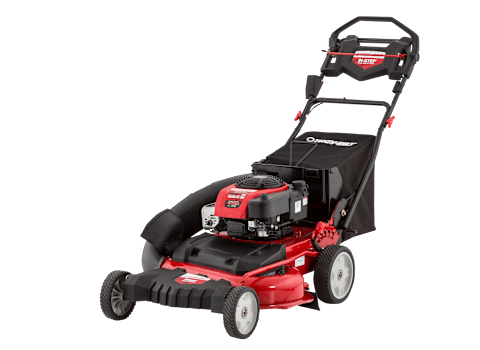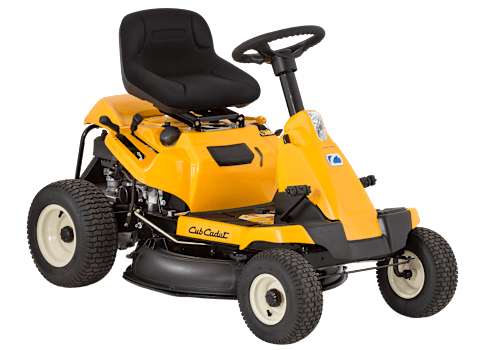Best Lawn Mowers for Big Yards
Posted by admin on
These top-performing models from CR's tests hit the sweet spot for ½- to 1-acre lawns

By Tobie Stanger
Looking for a lawn mower for a yard that’s big but not huge? Your search isn’t so different from that of Goldilocks. You want something just the right size: not too small to tackle the job properly, and not so big that it’s overkill.
For small yards of up to ¼ acre, walk-behind push mowers are a solid choice. For slightly larger yards—from ¼ acre to about ½ acre—self-propelled walk-behinds are ideal; the powered wheels pull the machine forward, freeing you from having to push much yourself.
But if you’re tackling a lawn of around ¾ acre, even powered wheels won’t make the job seem easy if you’re clearing only a 21-inch-wide swath on each pass. That’s the standard width for walk-behind mowers. And yet a regular riding mower or zero-turn-radius model might seem unnecessary for a yard that size—plus, they’re inconvenient to store and can be much more expensive.
Let us direct you to two better options: the wide-deck self-propelled mower and the rear-engine rider.
The former resembles a standard walk-behind mower, but it boasts an extra-wide cutting deck, typically 28 inches. That extra width will shave about a quarter of the time off each mowing—which adds up to a lot of hours saved over the season.
Rear-engine riders, on the other hand, are scaled-down riding mowers, with engines mounted behind (rather than in front of) the seat. Most have 30-inch-wide cutting decks, compared with the decks on riding mowers, which range from 36 to 54 inches. The narrower profile means they’re about 25 percent smaller than full-sized riders, which means these rear-engine riders require less storage space.
Both types of mowers are typically powered by gas, but we have tested two battery-powered rear-engine riders.
“Wide-deck self-propelled mowers and rear-engine riders make up a small share of all the lawn mowers sold in the U.S.,” says Courtney Pennicooke, an analyst who oversees the lawn mower market for Consumer Reports. “But they can be an economical choice for people with larger-than-average lawns.”
Each year, Pennicooke makes sure that a number of both mower types are among the dozens of models we evaluate at our dedicated testing facility.
How CR Tests Lawn Mowers and Tractors
To get you ratings and reviews of the latest models by early spring, our testers travel to our mower-testing facility in Fort Myers, Fla., to conduct tests in late winter at grounds we prepare each year. We plant 1,800 pounds of grass seed (predominantly annual rye, prized for its dense growth) and cut 500,000 square feet of grass in three modes—mulching, side-discharging, and bagging a total of 3,000 pounds of clippings. We mow both level turf and slopes to get a feel for each model and review the convenience features.
The Overall Score incorporates all that performance data, along with predicted reliability and owner satisfaction ratings from our latest member surveys. They leverage data on more than 61,600 lawn mowers and tractors that members purchased between 2011 and 2021.
Best Lawn Mowers for Big Yards
Size isn’t the only factor that should dictate your decision. Start with our lawn mower buying guide, which explains how the slope of your yard can change the equation. You’ll also find a thorough overview of battery-powered models, which make up an ever-growing slice of the mower market. Next, check our comprehensive lawn mower ratings.
CR members with digital access can also read on for ratings and reviews of the very best mowers for big yards (up to an acre).
Best Wide-Deck Self-Propelled Mowers
Troy-Bilt TB WC28T

CR’s take: The top-rated Troy-Bilt TB WC28 trims really well, regardless of how you cut your grass. It’s best at bagging—it earns an Excellent rating in that test—but also receives Very Good ratings mulching and side-discharging performance. It cuts quite evenly and handles well, but it’s a bit noisier than most regular self-propelled gas mowers. In our latest survey, Troy-Bilt gas self-propelled mowers received Good ratings for both predicted reliability and owner satisfaction. This model also features a washout port, which lets you hook up a garden hose to clean under the cutting deck, and a blade-brake clutch, a nice safety feature that allows you to pause the blades without cutting the engine if you need to move a rock or stick out of your path.
Toro Timemaster 21199

CR’s take: Toro’s Timemaster is like a push mower on steroids. The huge 30-inch cutting deck means you’ll be able to cut your grass in about two-thirds of the time it takes with a regular walk-behind mower. Deck size aside, the Toro is almost identical to the Troy-Bilt TB WC28 in terms of features and performance, receiving almost identical ratings in our lab tests. (This model is a tad noisier than the Troy-Bilt.) The biggest difference is in our survey ratings: Toro gas self-propelled mowers received a Good rating for predicted reliability and an Excellent rating for owner satisfaction. At a slightly higher price than the Troy-Bilt’s, though, the Toro’s slightly wider deck might be worth it for mowers who want to get the job done in less time.
Best Rear-Engine Riding Mowers for Big Yards
Cub Cadet CC30e

CR’s take: With the battery-powered Cub Cadet CC30e, you’re getting much the same performance provided by its less costly sister, gas-powered Cub Cadet CC30 H (below), but with less noise and better mulching—that is, producing and evenly distributing fine clippings over a lawn’s surface. Notably, the evenness of this 30-inch mower’s cut earns a Very Good rating vs. the Cub Cadet CC30 H’s Excellent rating. Among its commendable features are a high-backed seat, cruise control, and the ability to cut in Reverse. But it has no washout port.
Cub Cadet CC30 H

CR’s take: For far less than the price of the higher-rated Cub Cadet C330e, the lean little Cub Cadet CC30 H offers a lot for the money. Though it occupies about 25 percent less space than Cub Cadet’s full-sized riding mowers, it still cuts quite well. It’s strongest at mulching and cutting in side-discharge mode, with Very Good ratings for both. And though many models require a dedicated bagging blade, this model saves you the trouble. Plus, it can cut in Reverse. The 30-inch cutting deck has a washout port for easy cleaning. Cub Cadet rear-engine riders received a Very Good rating for predicted reliability and an Excellent rating for owner satisfaction in our member surveys.
Finding the Perfect Lawn Mower
Is your lawn mower failing to make the cut? On the “Consumer 101” TV show, Consumer Reports expert John Galeotafiore explains to host Jack Rico how to find the best mower for your needs.
Consumer Reports is an independent, nonprofit organization that works side by side with consumers to create a fairer, safer, and healthier world. CR does not endorse products or services, and does not accept advertising. Copyright © 2022, Consumer Reports, Inc.
